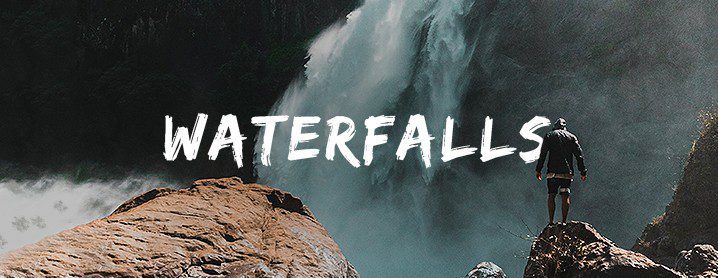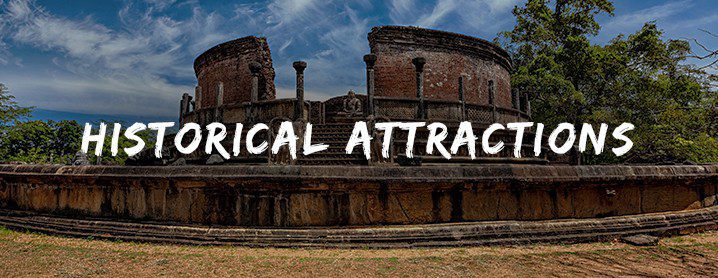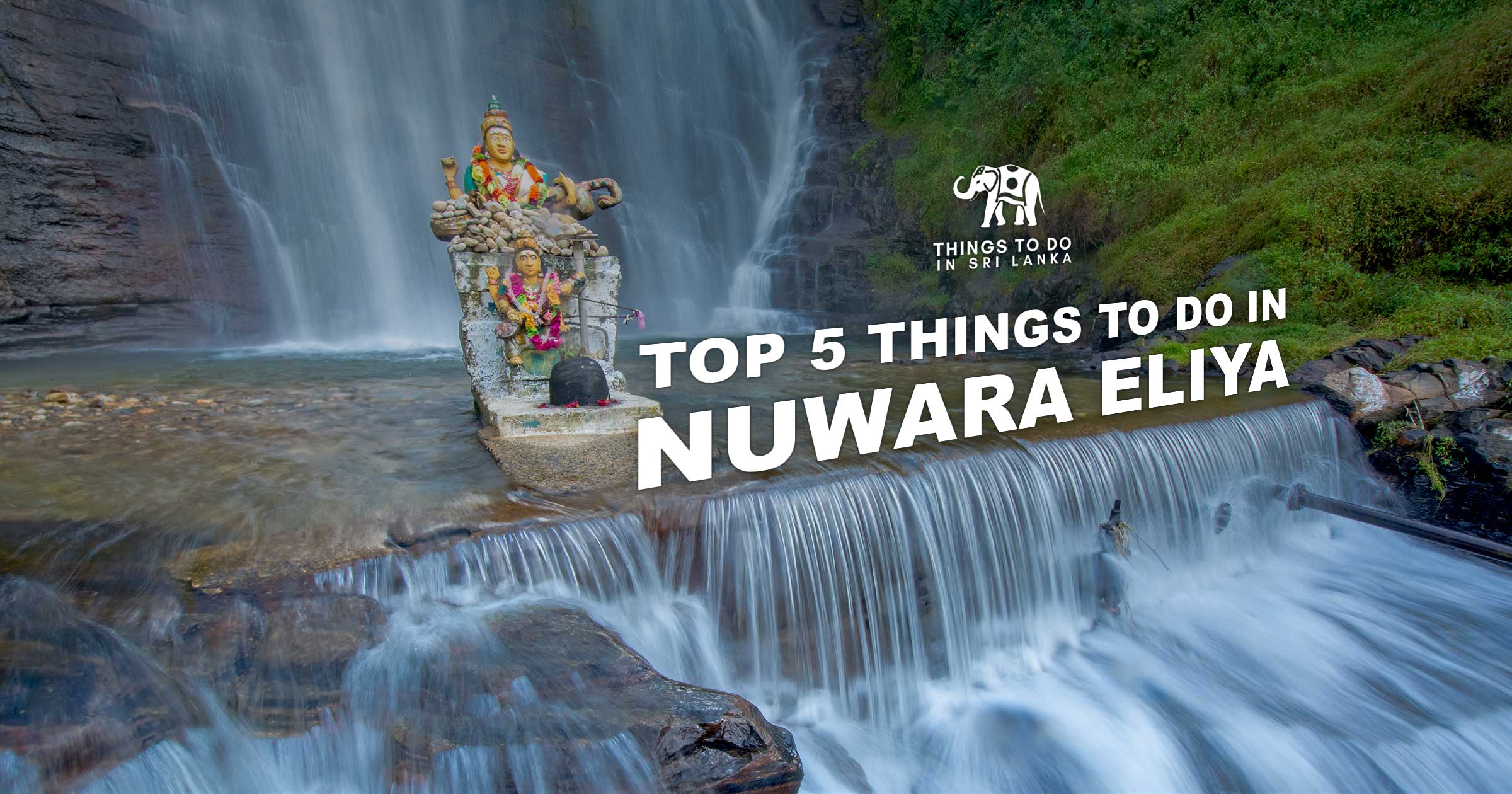
Top 5 things to do in Nuwara Eliya
The “Little England” as the British playfully called it, is guarded by tea covered misty mountains and hails you to its comfy and chilly embrace. 🌄
01. Horton Plains National Park (HP)
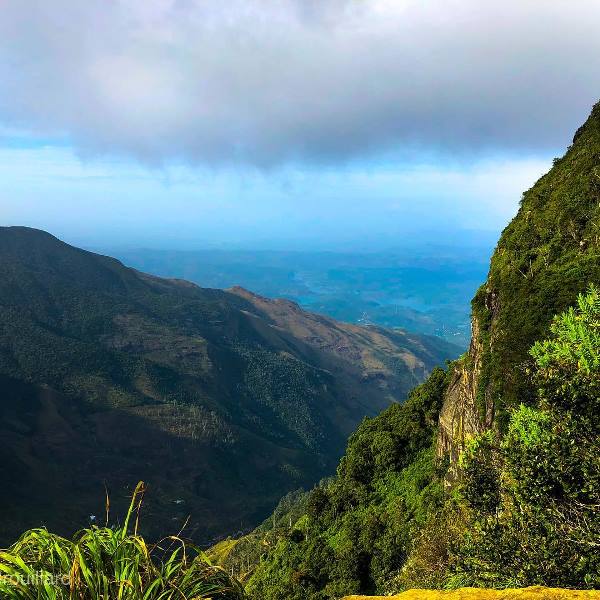
The great world’s end drop can be reached after a scenic hike through Horton Plains | Photo Credit: emibro3
This is a MUST visit place while you’re in Sri Lanka. It is a vast plain of Tussock grass and cloud forest that is a biodiversity hot-spot. The collection of Flora and Fauna is unique to this area.
The sheer precipice “Great World’s End” is also located at the west edge of the park. There is a bit of hike to reach the World’s End and Baker’s fall (8 km round trip) but it is totally worth it.
Nature lovers and Hikers would love this place. No place like this exists anywhere in the island. In fact, the gloomy weather and mist might trick you into thinking that you’re in Yorkshire.
Getting There
The distance is 27.5 km to the park entrance (Pattipola) from Nuwara Eliya [ Google Maps ]. There is no public transport available to the park because this road is narrow and not in a good state.
You can arrange transport with your host or hire a taxi for the round trip. The cost for a tuk-tuk may start from LKR 3,000 while a vehicle may charge LKR 3,500 -4,500. (From N’Eliya)
The closest you can get using public transport is to Pattipola or Ohiya railway stations by train. You’ll still have to hire a tuk-tuk to make 10 km to the park’s visitor’s centre from both of these places. It will cost around 2,000 – 2,500 LKR.
There are 02 park entrances one for Pattipola side and the other for Ohiya side. You should buy tickets from here. The taxi would go past the entrance and drop you at the visitor centre where the trail-head is.
Entrance fee for Horton Plains
You’ll have to pay Individual fees for you and the driver+ Charges for the Vehicle+ Service charge + 12% VAT (Crazy right?).
Mentioned below are the charges. Hope these exorbitant amounts they charge from foreigners put into the welfare of animals proper upkeep of the park.
- Foreign Adult – 15 USD
- Foreign child ( 6 -12 yrs) – 8 USD
- Charges for the Vehicle
- Jeep – 250 LKR
- Car – 125 LKR
- Van – 250 LKR
- Bus – 650 LKR
- Service Charge – 8 USD
- VAT – 15 %
- Opening Hours – 06:00 AM to 06:00 PM ( No admission after 03:00 PM)
[ Source ]
Please note that the payments must be made in LKR. They have a price list mentioned in LKR at the ticketing office. I think they change it time to time according to the currency rates.
World’s End Trail
Actually, there are two world’s ends. The Great World’s end drop, located at the southernmost point of Horton Plains, is a sheer drop of 870m (2,854 ft).
The Mini world’s end is located just 01 km to the east of it has a drop of 270m (886 ft). There are podiums constructed at both of these viewpoints to admire the astounding views of central highlands.
If you visited early you can view unobstructed views towards southern plains, Adams Peak, Kirigalpotta, Thotupola Mountain, Gommoliya and Balathuduwa mountains.
Directly below in the valley, you’d see Non Pareil tea estate and Nagrak Division. Udawalawe and Samanala reservoirs can also be seen.
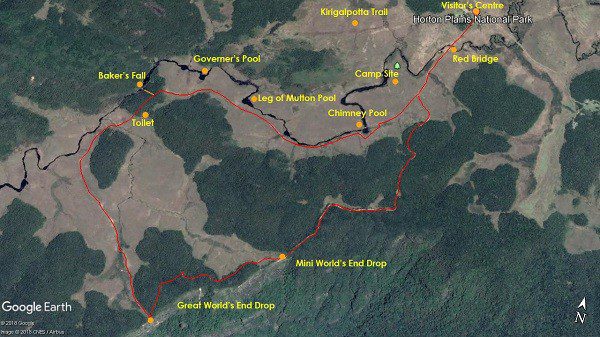
World’s end circular trail (click to enlarge) – map data via Google Earth
These viewpoints can be reached via a circular trail (8km). It is considered a medium level hike with a few narrow and rocky sections. The trail runs through grassy plains and cloud forests. The baker’s fall (20m) can be reached by taking a little detour off this trail.
You can start from to the left or right at the trail-head since this is a circular trail. It will take 3-4 hours depending on how clear the weather is.
It is important to take the hike in dry season Jan-April to avoid misty and windy situations. [ Detailed Trail Guide ]
Please be careful when taking photos and the World’s End especially in windy/misty situations. One guy had almost died falling off the cliff by not being careful. Unfortunately, he is the only one who survived falling off this vertical cliff so far.
Kirigalpotta Trail
The 02nd Highest mountain of Sri Lanka (2,388m) Kirigalpotta is what you see prominently to your right when you’re going towards the world’s end.
The scenic trail to climb this mountain starts behind the visitor’s centre. (Refer to the above trail map). It is a moderate hike (11 km) which takes about 3-4 hours with an elevation gain of 250m. [ Trail Guide ]
It is better to accompany a trekker since the trail isn’t visible at some points. Beware though, there have been leopard encounters. How to survive a leopard encounter ?
Facts about Horton Plains
- Area : 3,160 Hectares (31.6 km2)
- Temperature : 8 – 210C
- Altitude: 1,200 – 2,300 m
- Category: Montane patana grasslands, Montane dwarf-forests
- Founded by: Capt. William Fisher and Capt. Albert Watson while they were Elk hunting [ Source ]
- Smallest national park in Sri Lanka
- The catchment area for Mahaweli, Kelani and Walawe Rivers
These animals call Horton plains there home
Sambar deer, bear monkeys, Wild boar and Black-naped hare are the largest mammals seen here and elusive Sri Lankan leopards hang about preying for them ( watch video ).
HP boasts 5 endemic mammals, 21 bird species and 15 types of Amphibians (e:g Frogs) and 06 types of endemic reptiles. [ Source ]
Did you know? Historical records say that Elephants had roamed these plains up until the early 20th century but were hunted to the extinction by the British.
Essential tips to visit
- Best time to visit Horton plains – February to April or July to September
- World’s End gets covered by mist in the afternoons, hence starting the hike early is recommended. (6:00 AM – 07:00 AM)
- No polythene is allowed inside the park. Make sure to bring back water bottles with you.
- Be prepared for severe cold conditions and rain during the monsoon months. In dry months, carry sunscreen and plenty of water.
- Be ready to abrupt changes in weather.
- Do not feed or get close to Sambar Deer. Their reactions are unpredictable.
- Wear sturdy walking/hiking shoes.
- Do not deviate from the main trail except for the Bakers Fall.
- No entrance after 3.00 PM is allowed as there is not enough time to complete the hike thereafter.
- Camping: Permission for camping must be obtained from DWC at least a month before.
02. Lake Gregory
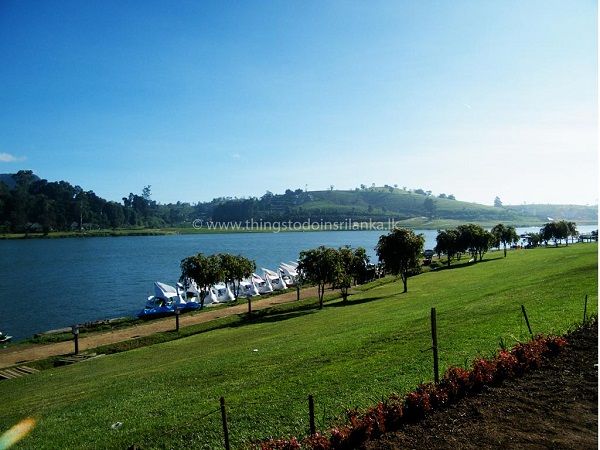
A perfect day in Gregory Lake
The governor Sir William Henry Gregory was a true pioneer in Sri Lankan colonial history. He gifted the National Museum for Colombo and Lake Gregory for N’Eliya.
While he was residing in N’Eliya he ventured to make this city a pleasurable place to travel. Gregory Lake is a fruit of such efforts. The area had been a swamp previously and in 1873, it was developed into a lake by crossing the Nanu Oya which originates from Mt. Piduruthalagala.
The Gregory Park was developed into a nature park and has become a protected nature reserve today.
The park is located 3 km from the city centre by N’Eliya – Welimada road [ Google Maps ]. The scenery is amazing with tea covered hills surrounding the lake. Visit this place especially if you’re traveling with kids.
Things to do in Gregory park
- Boat Riding (Price/Duration)
- Swan shaped paddle boats – LKR 2,500 / 30 min
- Motorboats – LKR 4,000 / 30 min
- Speedboats – LKR 4,000 – 6,000 / 30 min ( Higher the HP, higher the price)
- Jet Ski – LKR 3,500 / 30 min
- Kayaking – LKR 2,000 / 30 min
- Cycling – LKR 200 / – 01 hr
- Kid’s Activities
- Enjoy local street food
- Have a picnic by the lake
There are pony rides as well but by the look of it, I feel these animals are tired and ill-treated. Better to skip this one.
The prices stated above are can vary according to the season and the service provider. They tend to overcharge foreigners for boat rides and stuff so be sure to haggle the price down.
Essential information and tips
- Entrance fee
- Adults: LKR 200
- Kids: LKR 20
- Free for kids under 6 yrs
- Opening hours : 08:00 AM – 06:00 PM
- The place gets crowded over the weekends and public holidays with locals.
- It is a good place to chill but you don’t need to specifically allocate time to visit here if you’re in a tight schedule.
03. Hakgala Botanical Garden
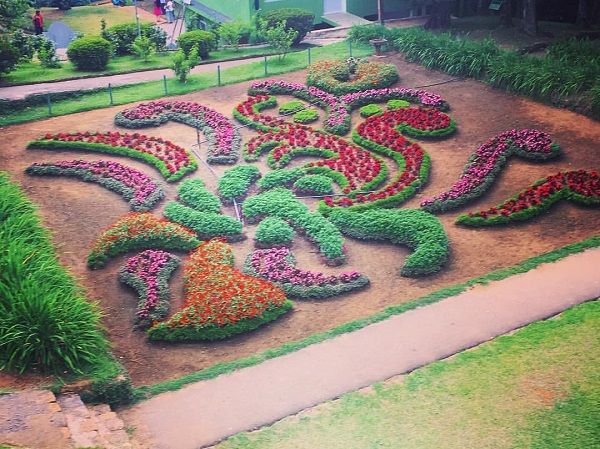
Creative flower beds in Hakgala | Photo credit: Chels
It is the 02nd botanical garden of the 05 national botanical gardens maintained by the government. It is almost half the size of Peradeniya garden and boasts a massive collection of picturesque flowers and foreign trees.
It was established in 1861 to carry out experiments on Cinchona (A medicinal plant that contains quinine. Quinine is used to cure Malaria). Later it was used to conduct researches on Coffee and Tea plants.
It was eventually declared as a botanical garden that today many flock to witness the gracious works of nature.
Tip: Victoria Park and Galway’s Land National Park both located within the N’Eliya town. These are much smaller than Hakgala garden.
Location
The garden is located 09 km outside the chaos of N’Eliya town by the N’Eliya – Welimada road ( Google Maps ). You can hop into any bus travelling that way (Welimada, Bandarawela, or Badulla) to get there.
It is a part of Hakgala Strict Nature Reserve, an upper montane rain forest. The 08th tallest mountain of the Island “Hakgala” (2,169m) is at the southwest area of the reserve.
The garden is established on the eastern slope of it. You’ll see it is hovering ahead like a giant with its three summits.
What is a Strict Nature Reserve (SNR)? SNRs are highly protected areas of sensitive biodiversity. No human activities are allowed here except for research and monitoring. [ Source ]
Important facts about the garden
- Area: 27.2 Hectares (68 acres)
- Elevation: 1,670 m
- Climate: Subtropical
- Temperature: 3 – 15 0C
- Average rainfall (Annual) : 2,300 mm
- Rainy season: May to August, October to December
- Founder: Dr G H W Thawaites
- Established in: 1861
- Number of plants: 20,000
- Endemic plants: 4,143
- Types of Flora: Endemic subtropical montane, foreign subtropical
- Official Website: Hakgala Botanical Garden
[ Source ]
What to see in the garden?
- Central pond – Yellow water lilies are grown here. Surrounded by Bunya Bunya pines trees
- Bulb Garden – Houses foreign flowers grown from bulbs such as lilies, Watsonia, Gladiolus, Lily of the Nile and Zephyranthes.
- Lower flower garden – Various kinds of Fuchsia, The Queensland box tree, Japanese silkworm Oak tree, southern Magnolia, indigenous Rhododendron.
- Rose Garden – Most loved by visitors. Modern rose classes from the UK and USA are planted here.
- Glass House – Houses indoor plants. Begonias, Peperomias, African violet, Primula, cacti and succulents
- Upper flower garden – Has herbaceous plants and mini-rose collection. Surrounded by Montezume pine, Hoope pine, Jacaranda trees, Monterey cypress and Japanese cedar trees.
- Knox summer house (Circuit Bungalow)
- Japanese garden
- Fern House
- Orchid House
Essential information for Visitors
- Opening Hours: 7.30 am-5.30 pm
- Entrance fee:
- Adult & Children over 12 – L:KR 1,500
- Children (Below 12): LKR 750
- College or University Student: LKR 1,000
- Buggy charge : LKR 500 (3 pax), LKR 1,000 (7 pax)
- Walking distance is about 04 km and will take 2-3 hours to cover the garden.
- A Limited number of buggies are available for the elderly/disabled.
- January to March is the planting season; hence there isn’t much to see at that time.
- Best time to visit is in April when newly planted flowers boom.
- May to August and October to December are rainy seasons.
- There is a plant sales centre within the plant nursery.
- Polythene and plastic are not allowed inside. You can buy snacks and stuff from a small canteen in the centre.
04. Moon Plains
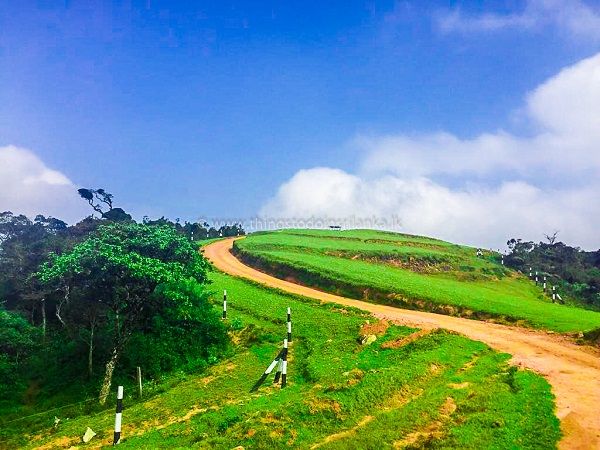
Winding paths of Moon Plains on the way to the viewpoint.
Moon Plains or “Sandathanne” is a vast plain developed into a tourism zone. The place is actually well known for its sweeping 3600 views of the hill country and bio-diversity.
It was opened in 2014 and has become a trending attraction in Nuwara Eliya. The plain had been cleared to plant potatoes which would otherwise be covered in a mountain forest.
If you’ve no time to visit Horton Plains, are with children/elderly who are not up to hiking, do the Moon Plain Safari instead.
How to get there?
It is located just 6km from the city and 3.4 km from Gregory Park. Go past the Gregory Park on Welimada road and turn left to Upper Lake road at the Mahagasthota junction at the end of the lake.
After a 05 minutes drive you’ll reach the see potato farm where the entrance to the plains is [ Google Map ].
You should park vehicles here to buy tickets and hire a safari jeep. They don’t allow people to walk in or bring their own vehicles inside to safeguard seed potatoes from harmful germs.
These jeeps are sanitized by Chlorine before entering the park. Better to get there as a group to split the cost for this forced Safari ride.
About Moon Plains
- Actual name: Environmental & Agricultural Tourism zone in Sandathanna
- Altitude: 1,889 m
- Highest point: 2,225m (Same as Horton Plains)
- Area: 155 Ha (385 acres)
- Animals: Sambar Deer, Barking Deer, Buffaloes, Bear Monkeys, Wild Boar, Peacocks, Jungle Fowls and many endemic birds.
360 View Point
The Safari jeep will take you 03 km inward the plain to an observation podium which affords sweeping views of the hill country.
The journey will only take 20 minutes whilst you can enjoy the surroundings if the weather permits. You’re not allowed get down until you reach the viewpoint. You can spend 01 hr at this point.
At this point, you could witness some of the highest mountains in Sri Lanka. Those are Piduruthalagala, Kirigalpoththa, Thotupola, Kikiliyamana, Single Tree Hill, Conical Hill, Great Western, Hakgala and Namunukula.
Essential information for visitors
- Ticket price:
- Adults: LKR 400
- Children: LKR 200
- Safari-Jeep rental cost: LKR 2,000 (08 pax)
- Opening Hours: 07:30 AM – 04:00 PM
- Contact No: 052-305 7042
- Feb – April the best time to visit.
- Going there early in the morning is best to see animals.
- Be prepared to abrupt changes in weather.
- There are no restaurants around, so bring your own food/drinks but leave no garbage behind.
05. Lover’s Leap Waterfall
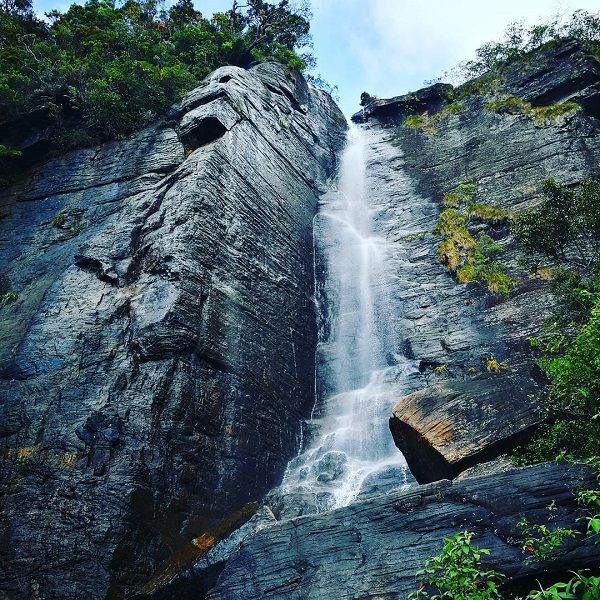
She falls graciously | Photo Credit: Daniela
It is time to mention one of the free things to do in Nuwara Eliya. There are many waterfalls outside the city proper but Lover leap is the only one within [ Google Maps ].
Hidden among the lush cover of Piduruthalagala Forest reserve, it can be reached after a refreshing hike through Pedro Tea Estate.
This 30m cascade is created by a stream originating from the Mount Pedro (Pidurutalagala) itself. The stream is the main water source for the town.
Lover’s Leap Trail
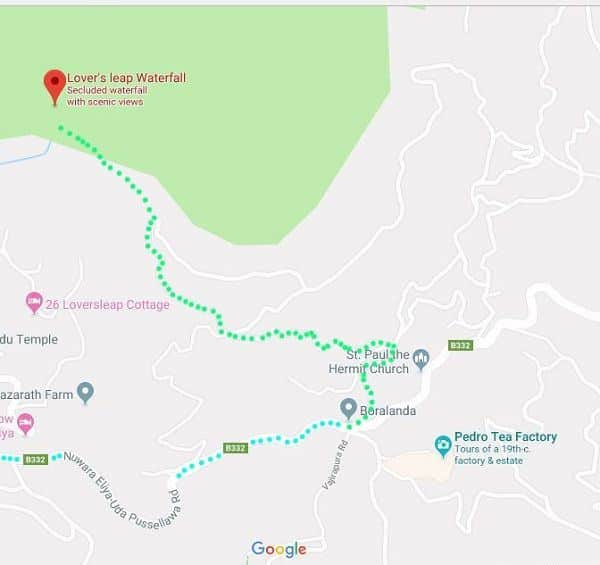
Lover’s Leap trail map via Pedro Estate (Click to Enlarge) via Google Maps
There are many trails, short-cuts to reach the base pool. Here is the trail guide for the most prominent one. You can either take a taxi or catch a bus to Boralanda from the main bus stand. (10 mins)
- From the town take a left at the end of Victoria Park to Uda Pussellawa rd.
- Drive straight about 04 km to Boralanda junction. (Pedro Estate junction) [ Google Maps ]
- There is a red sign-board stating the distance to the falls as 05 km, but it is not more than 02 km to the fall.
- At the junction look to your left; there is a sign-post with an arrow pointing to D.G.M’s Bungalow by a road leading up through the tea estate. Follow along.
- You can walk rest of the way or a Vehicle with a high ground clearance. A tuk-tuk can also be used.
- Take a left at the upcoming junction.
- At the immediately upcoming V junction, take the right.
- Go straight past the 4-way junction and get-off the vehicle at the upcoming hairpin bend.
- Take the trek leading upwards from the said bend.
- There is about 0.5 km hike to the fall from this position. The path is clear but steep.
Other waterfalls around N’Eliya and the distance from the city.
- Bomburu Ella Falls (18.3 km)
- Ramboda Falls (20 km)
- Devon Falls (29 km)
- St. Clairs falls (30 km)
Conclusion
We hope you’ve got the information you were looking for and enjoyed the article. If it didn’t meet your need or you want to share your experiences in N’Eliya (good or bad), do leave us a comment and we’ll get back to you. Hope you’ll have a pleasant time in Sri Lanka.
Don’t forget to check our destination guide to Nuwara Eliya as well.
Text and photos are available under the Creative Commons Non-Derivations and Non-Commercial license



